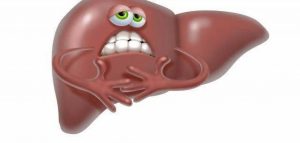Not many people know, but the kidneys are not only an excretory organ. It is “here” that vitamin D is transformed into its active form. Here, erythropoietin is synthesized, which maintains the level of red blood cells. Here renin is formed, which indirectly affects the “width” of the vessels and, thereby, determines the pressure. And kidney disease has many more signs and consequences than is commonly believed.
“Non-standard” and “classic”
Symptoms of kidney problems, as already noted, are not only about “urine” and back pain. After all, those appear exclusively at the time of acute inflammation in the organ.
In other cases, the changes can be much more inconspicuous, the identification of which is possible only with the help of screening. And a special, distinctive feature of such disorders is resistance to traditional therapy.
Signs may include:
1. Jumps in blood pressure, poorly amenable to correction.
After all, renal renin activates angiotensin, which sharply narrows blood vessels and increases blood pressure.
Among other things, angiotensin irritates the thirst center in the brain, literally “forcing” more drinking, thereby increasing the volume of the liquid part of the blood and contributing to an even greater increase in pressure.
And this “pressure” does not decrease after taking “conventional” drugs, forming the risk of a critical increase.
2. Persistent anemia (deficiency of red blood cells)
due to a lack of renal erythropoietin, which stimulates the bone marrow to synthesize red blood cells. At the same time, the level of iron, vitamins B12 and B9, the deficiency of which is the main cause of anemia, remains normal.
3. Symptoms of D-deficiency and calcium disorders.
Decreased immunity, distorted immune responses, caries, osteoporosis, rickets, muscle cramps, weakened memory and concentration, mood instability with a tendency to depression and other symptoms occur against the background of normal levels of total vitamin D and its fractions (25-hydroxyergocalciferol and 25-hydroxycholecalciferol) …
A decrease in the level of 1,25-dihydroxycholecalciferol (calcitriol) – the only active form of vitamin D, which is formed in the kidneys under the action of parathyroid hormone and has all the effects inherent in the vitamin, can “give out” the renal origin of symptoms.
Of course, kidney problems can manifest themselves in more “classic” symptoms, such as urinary disorders, edema and general “weakness”. Indeed, with renal failure, the body accumulates toxic metabolic products, as well as metabolites of drugs and other “harmful” substances.
Simple and affordable
Kidney screening, in addition to urinalysis, should include some blood parameters, including:
Creatinine and urea are products of protein metabolism, a slight increase in the level of which is permissible during active physical exertion and against the background of starvation. Whereas a significant increase is a sign of developing renal failure;
Uric acid is a breakdown product of purine bases (DNA, RNA), an increase in which leads to the accumulation of urates and the development of gout. And the reason for the increase may be a violation of the excretory function of the kidneys, as well as a number of serious diseases;
Albumin is one of the protein fractions synthesized in the liver, which normally cannot pass through the renal filter. Therefore, a lack of albumin in the blood can be an early sign of kidney https://en.wikipedia.org/wiki/Kidney disease. However, it is necessary to evaluate such an analysis in combination with other indicators, as well as a blood test (appearance of protein);
Clinical blood test with a leukocyte formula – helps to identify renal inflammation (which in the early stages may not have clinical signs), as well as a lack of red blood cells (anemia). That, as already noted, may be a consequence of erythropoietin deficiency.



